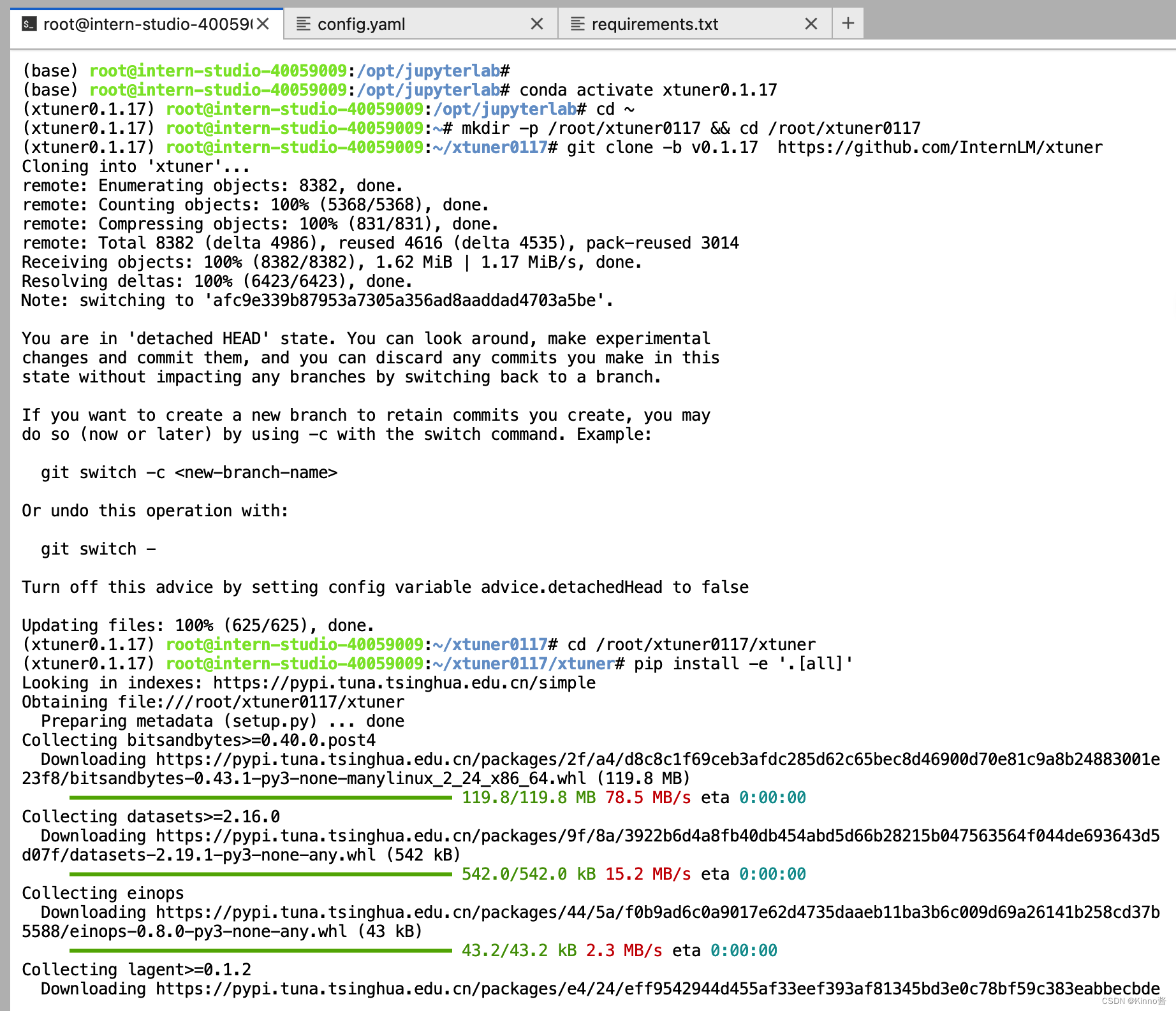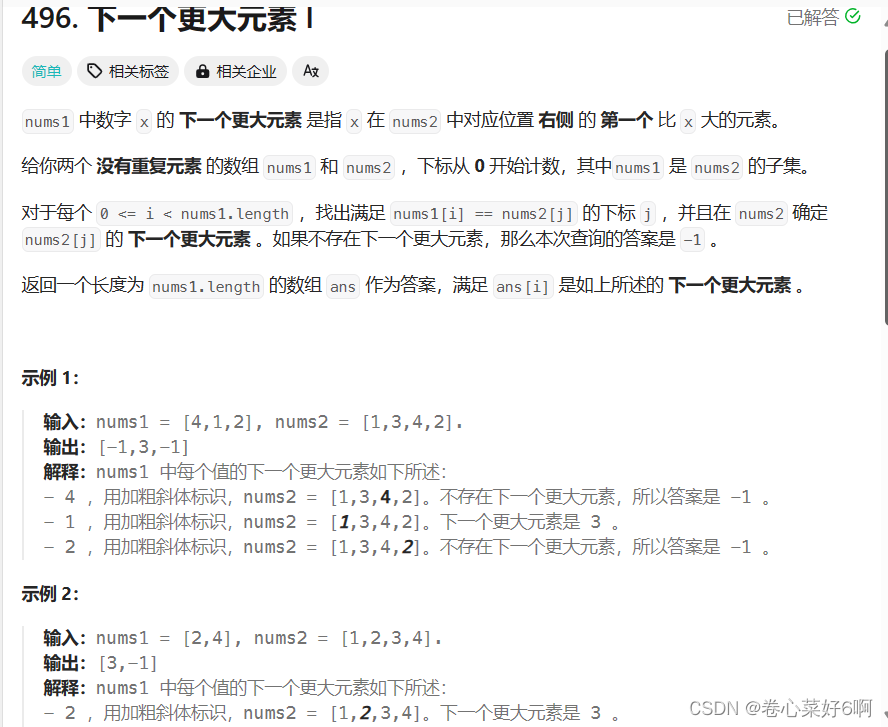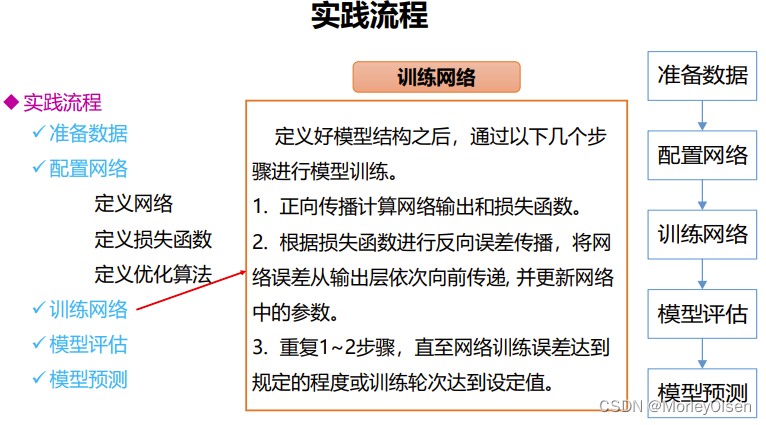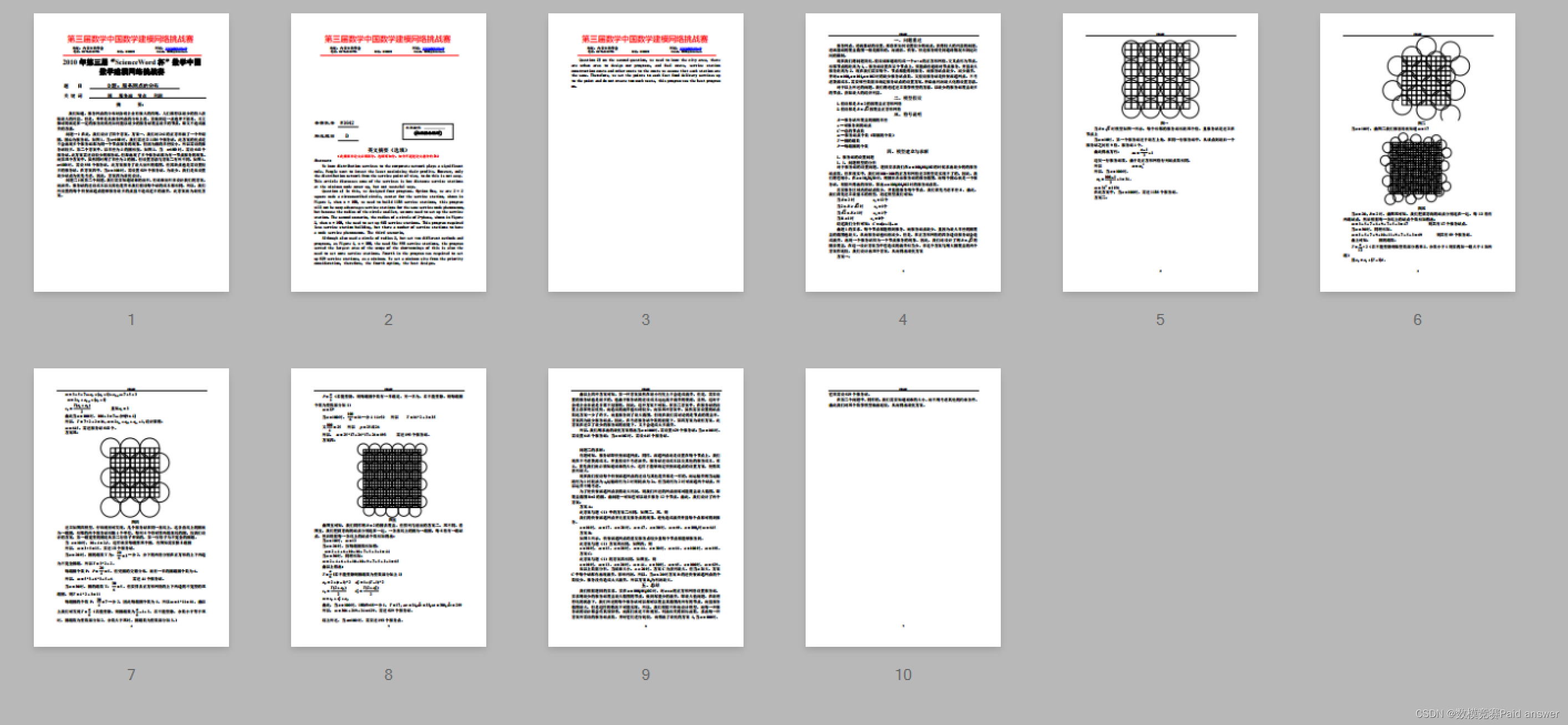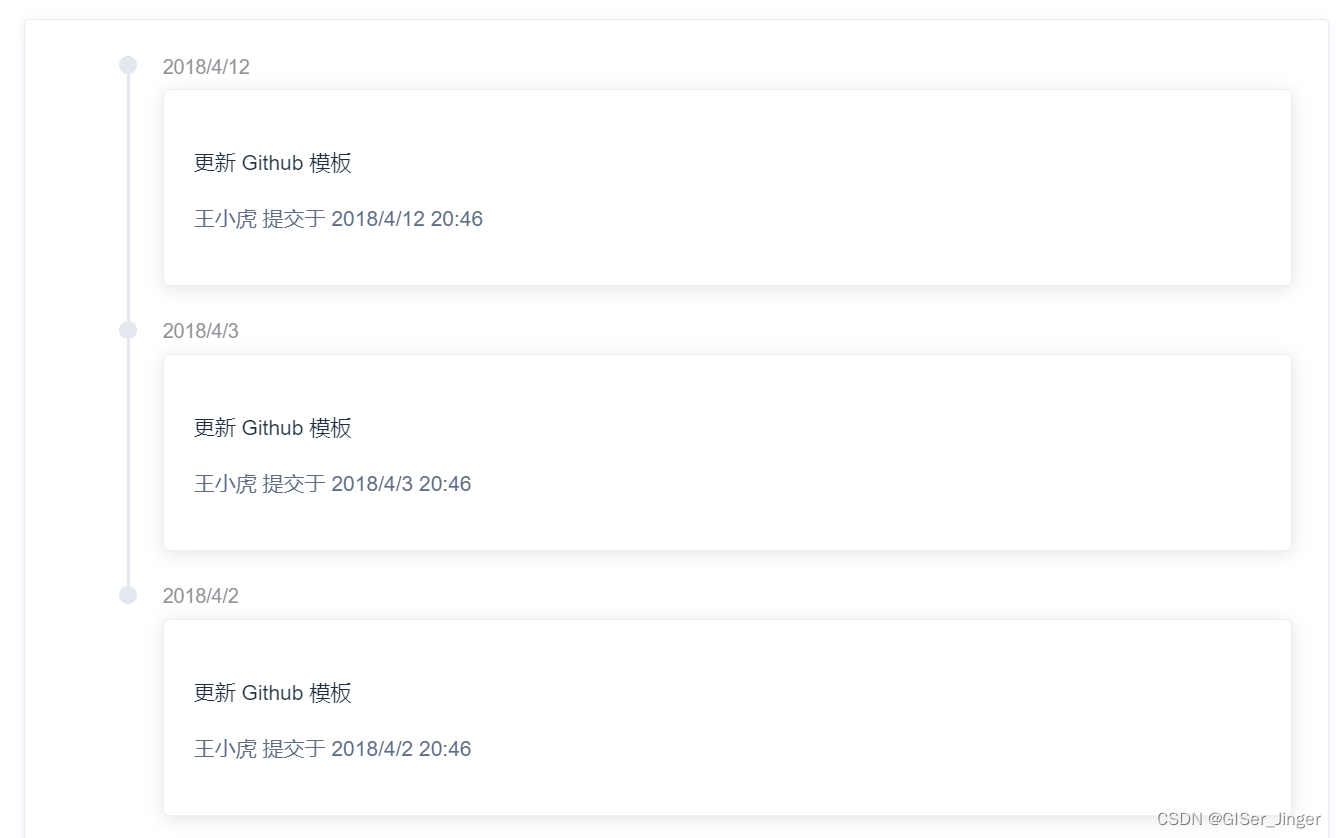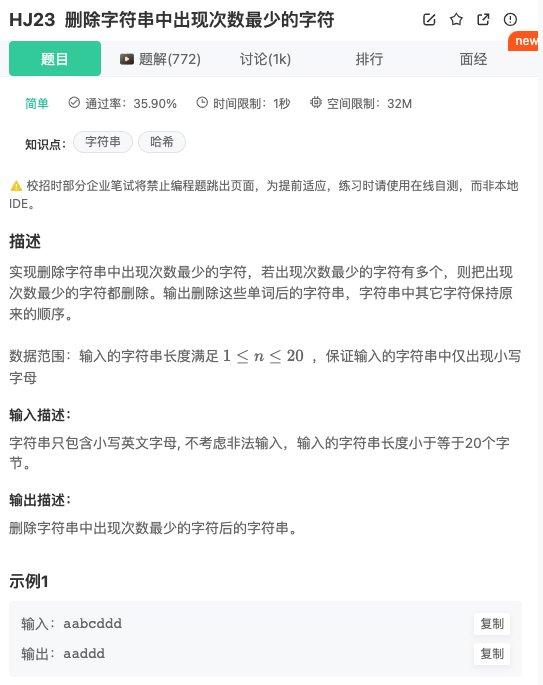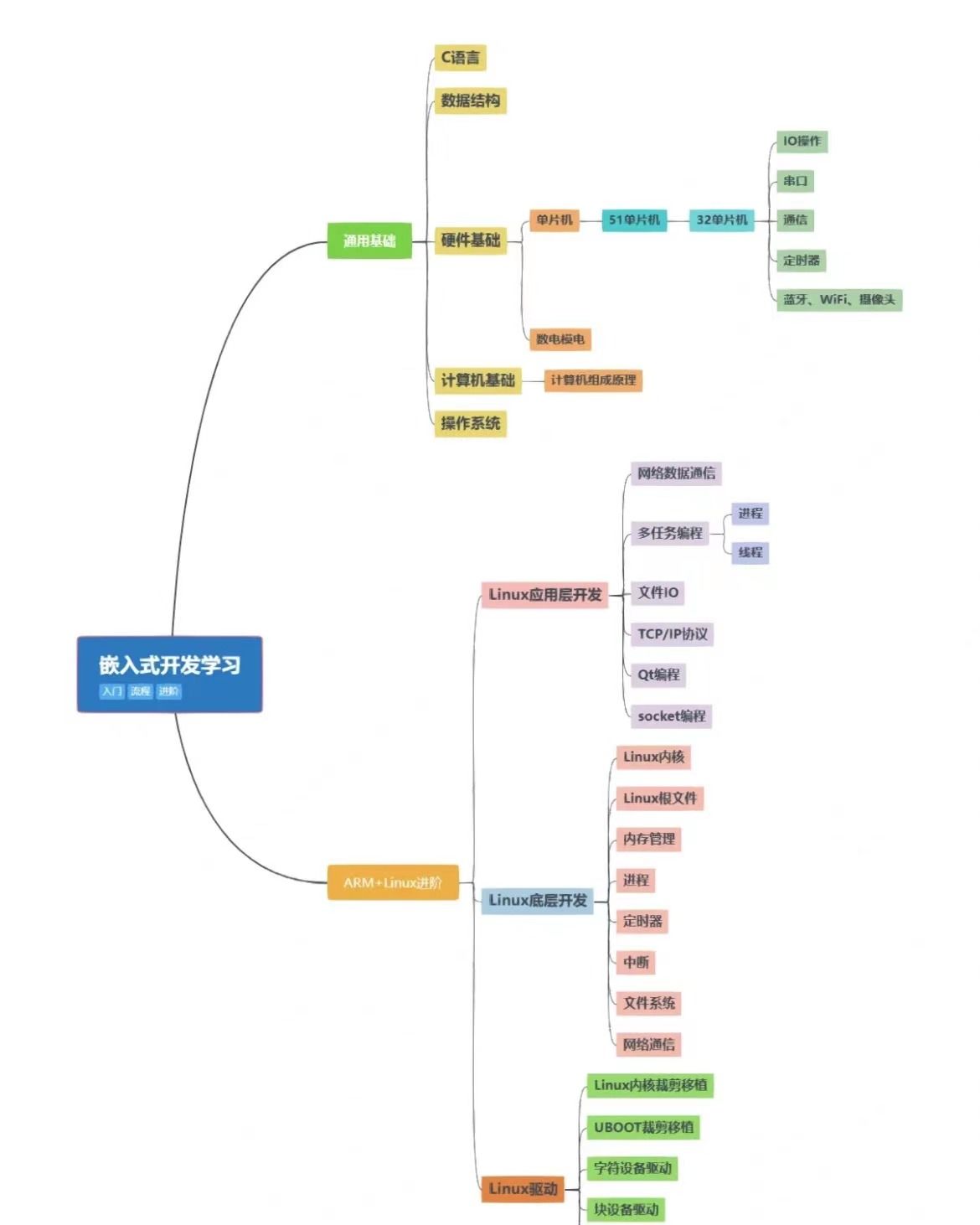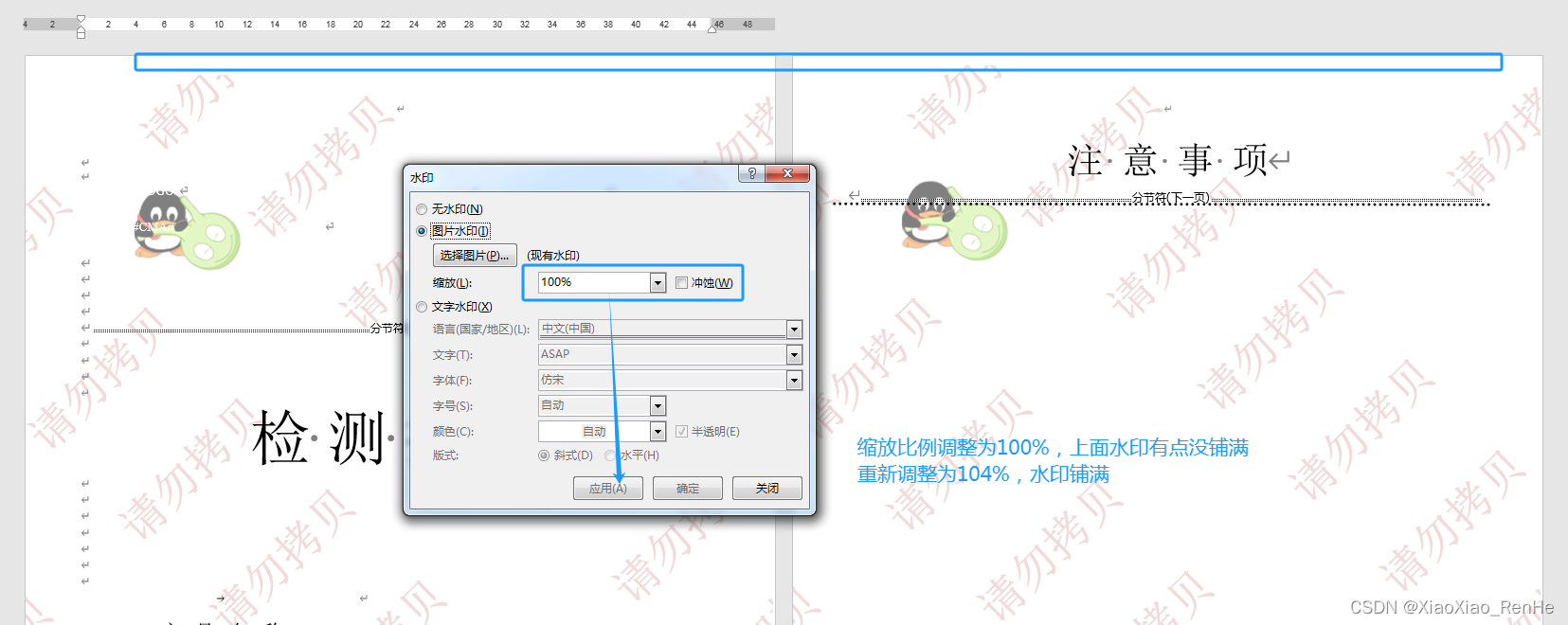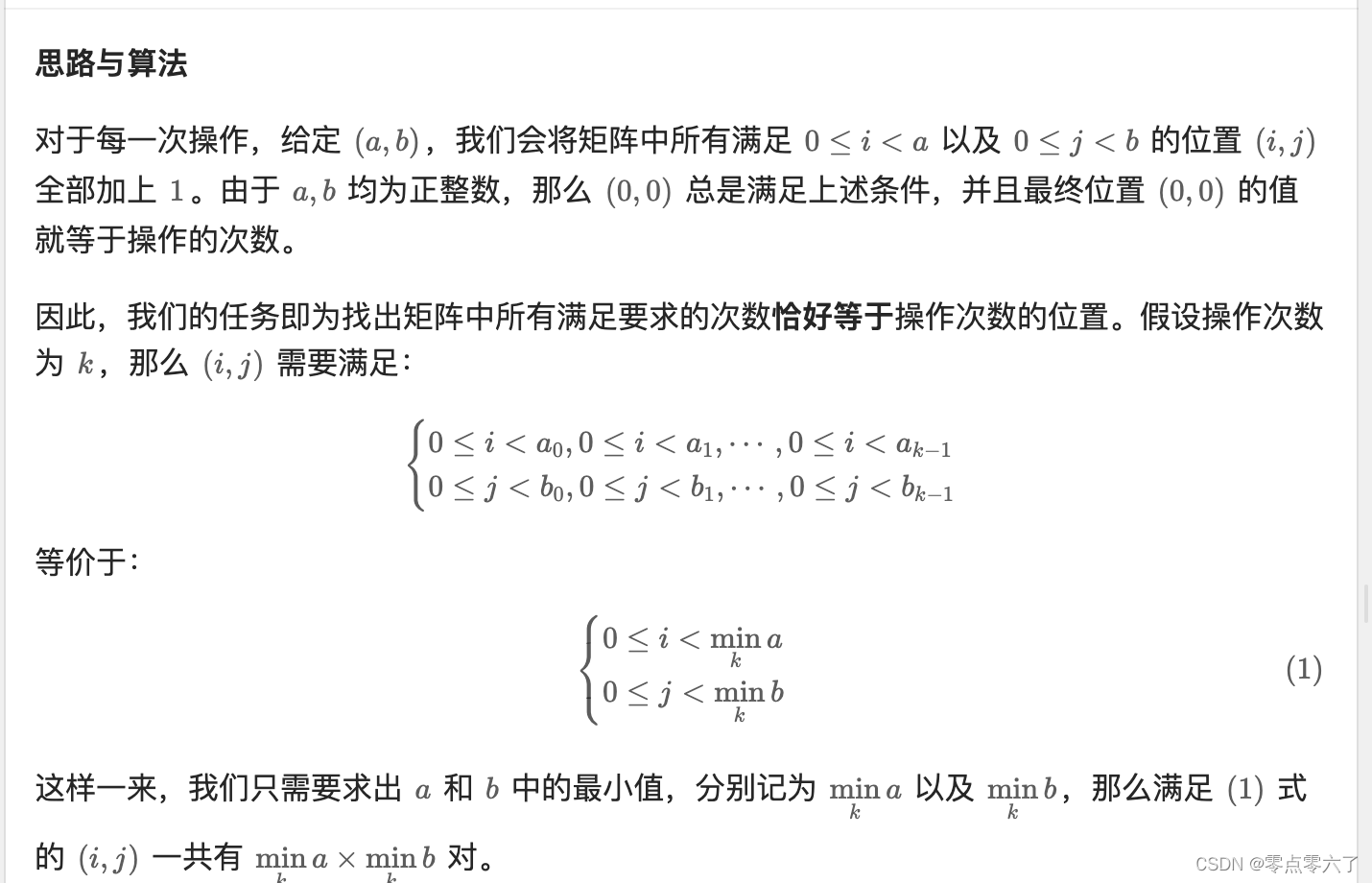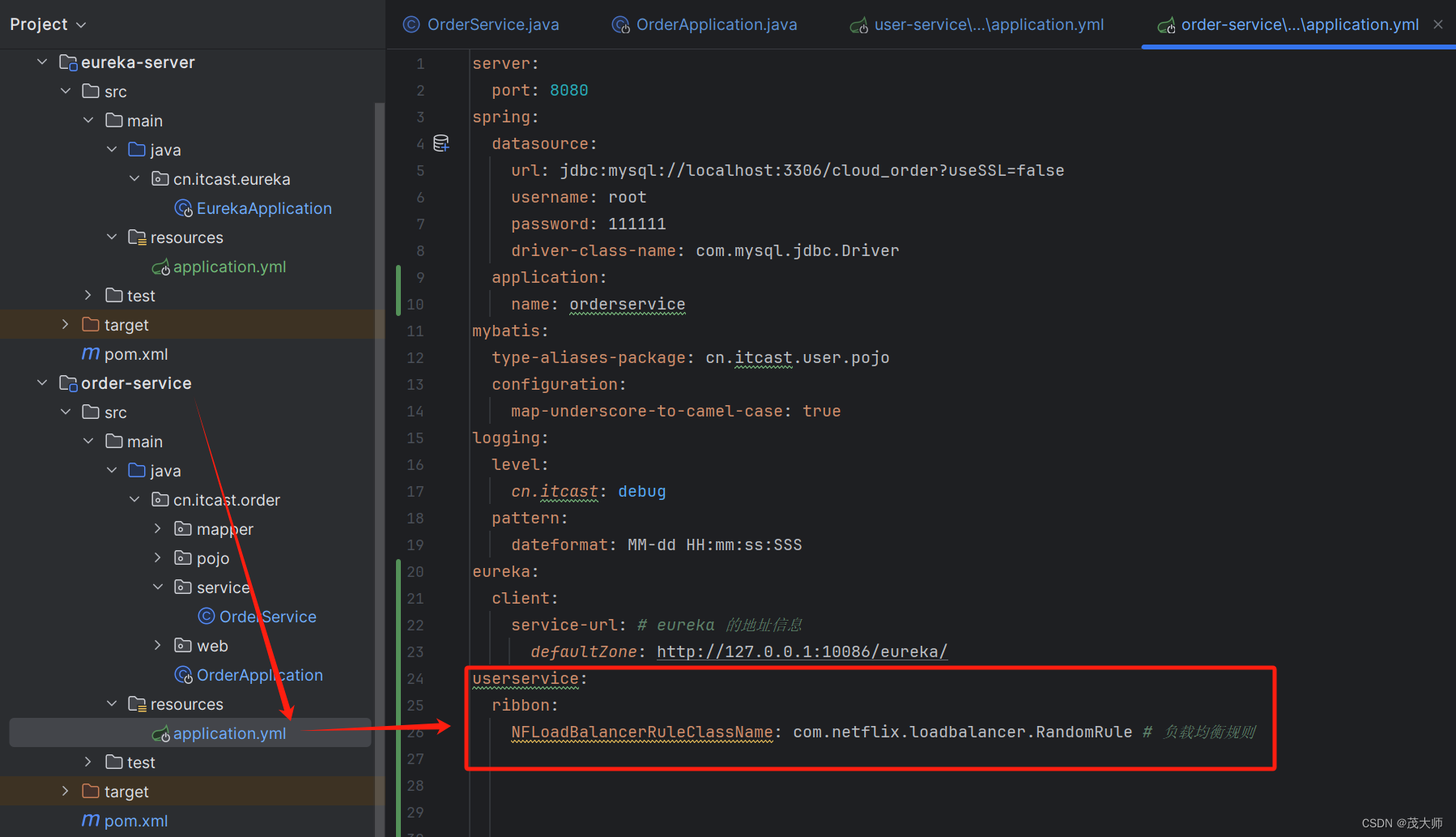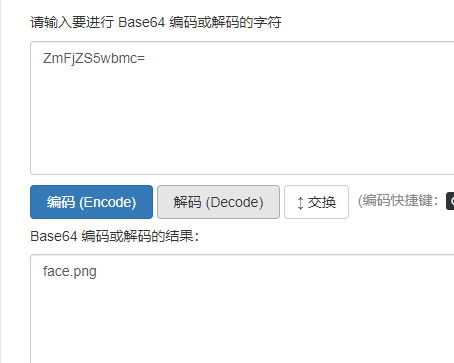1.filter
在多媒体处理中,filter 的意思是被编码到输出文件之前用来修改输入文件内容的一个软件工具。如:视频翻转,旋转,缩放等。
语法:[input_link_label1]… filter_name=parameters [output_link_label1]…
1、视频过滤器 -vf
如 input.mp4 视频按顺时针方向旋转 90 度
ffplay -i input.mp4 -vf transpose=1
如 input.mp4 视频水平翻转(左右翻转)
ffplay -i input.mp4 -vf hflip
2、音频过滤器 -af
实现慢速播放,声音速度是原始速度的 50%
offplay input.mp3 -af atempo=0.5
过滤器链(Filterchain)
Filterchain = 逗号分隔的一组 filter
语法:“filter1,filter2,filter3,…filterN-2,filterN-1,filterN”
顺时针旋转 90 度并水平翻转
ffplay -i input.mp4 -vf transpose=1,hflip
过滤器图(Filtergraph)
第一步: 源视频宽度扩大两倍。
ffmpeg -i jidu.mp4 -t 10 -vf pad=2*iw output.mp4
第二步:源视频水平翻转
ffmpeg -i jidu.mp4 -t 10 -vf hflip output2.mp4
第三步:水平翻转视频覆盖 output.mp4
ffmpeg -i output.mp4 -i output2.mp4 -filter_complex overlay=w compare.mp4
是不是很复杂?
用带有链接标记的过滤器图(Filtergraph)只需一条命令
基本语法
Filtergraph = 分号分隔的一组 filterchain
“filterchain1;filterchain2;…filterchainN-1;filterchainN”
Filtergraph 的分类
1、简单(simple) 一对一
2、复杂(complex)多对一, 多对多
过滤器图处理流程:
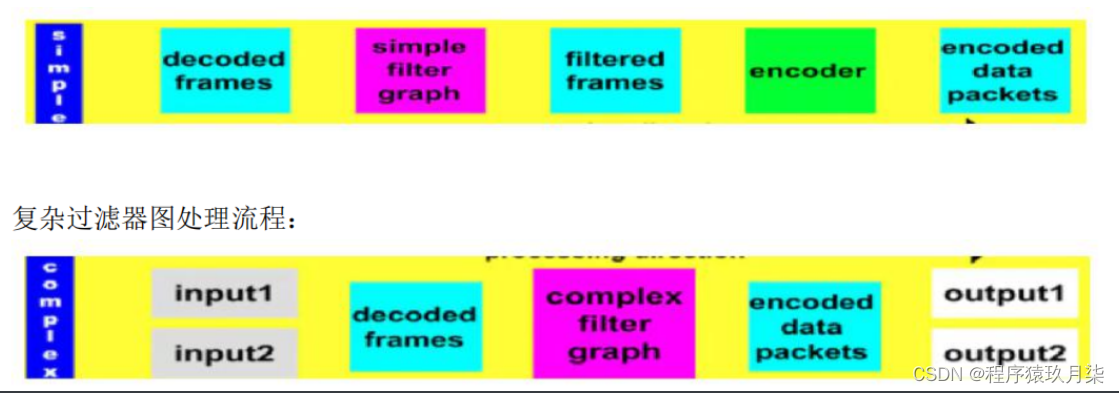
对于刚才用三步处理的方式,用过滤器图可以这样做:
ffplay -f lavfi -i testsrc -vf split[a][b];[a]pad=2*iw[1];[b]hflip[2];[1][2]overlay=w
F1: split 过滤器创建两个输入文件的拷贝并标记为[a],[b]
F2: [a]作为 pad 过滤器的输入,pad 过滤器产生 2 倍宽度并输出到[1].
F3: [b]作为 hflip 过滤器的输入,vflip 过滤器水平翻转视频并输出到[2].
F4: 用 overlay 过滤器把 [2]覆盖到[1]的旁边.
filter 涉及的结构体,主要包括:
-
FilterGraph, AVFilterGraph
-
InputFilter, InputStream, OutputFilter, OutputStream
-
AVFilter, AVFilterContext
-
AVFilterLink
-
AVFilterPad;
2.DirectShow
DirectShow(简称 DShow) 是一个 Windows 平台上的流媒体框架,提供了高质量的多媒体流采集和回放功能。它支持多种多样的媒体文件格式,包括 ASF、MPEG、AVI、MP3和 WAV 文件,同时支持使 动或早期的 VFW 驱动来进行多媒体流的采集。
DirectShow 大大简化了媒体回放、格式转换和采集工作。但与此同时,它也为用户自定义的解决方案提供了底层流控制框架,从而使用户可以自行创建支持新的文件格式或其他用户的 DirectShow 组件。
DirectShow 是基于**组件对象模型(COM)**的,因此当你编写 DirectShow 应用程序时,你必须具备 COM 客户端程序编写的知识。对于大部分的应用程序,你不需要实现自己的COM 对象,DirectShow 提供了大部分你需要的 DirectShow 组件,但是假如你需要编写自己的 DirectShow 组件来进行扩充,那么你必须编写实现 COM 对象。
使用 DirectShow 编写的典型应用程序包括:DVD 播放器、视频编辑程序、AVI 到 ASF转换器、 MP3 播放器和数字视频采集应用。
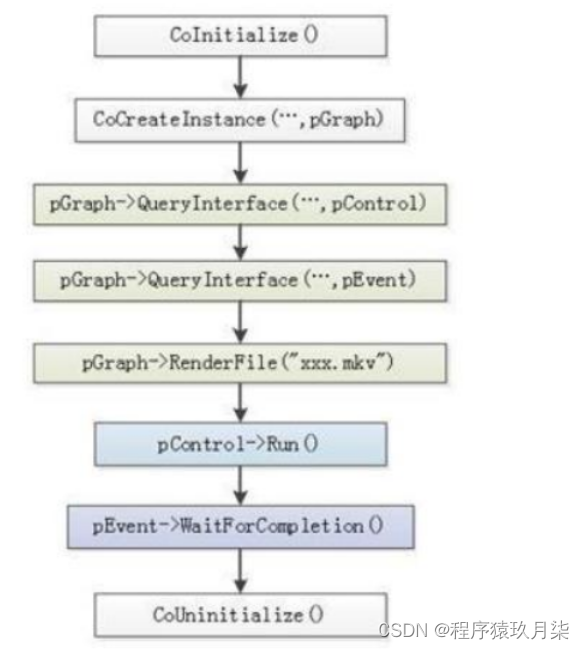
DirectShow 的架构如下图所示:

/*** @file* API example for decoding and filtering* @example filtering_video.c*/#define _XOPEN_SOURCE 600 /* for usleep */
#include <unistd.h>
#include <stdio.h>
#include <stdlib.h>#include <libavcodec/avcodec.h>
#include <libavformat/avformat.h>
#include <libavfilter/buffersink.h>
#include <libavfilter/buffersrc.h>
#include <libavutil/opt.h>const char *filter_descr = "scale=640:480,hflip";
/* other way:scale=78:24 [scl]; [scl] transpose=cclock // assumes "[in]" and "[out]" to be input output pads respectively*/static AVFormatContext *fmt_ctx;
static AVCodecContext *dec_ctx;
AVFilterContext *buffersink_ctx;
AVFilterContext *buffersrc_ctx;
AVFilterGraph *filter_graph;
static int video_stream_index = -1;
static int64_t last_pts = AV_NOPTS_VALUE;static int open_input_file(const char *filename)
{int ret;AVCodec *dec;if ((ret = avformat_open_input(&fmt_ctx, filename, NULL, NULL)) < 0) {av_log(NULL, AV_LOG_ERROR, "Cannot open input file\n");return ret;}if ((ret = avformat_find_stream_info(fmt_ctx, NULL)) < 0) {av_log(NULL, AV_LOG_ERROR, "Cannot find stream information\n");return ret;}/* select the video stream */ret = av_find_best_stream(fmt_ctx, AVMEDIA_TYPE_VIDEO, -1, -1, &dec, 0);if (ret < 0) {av_log(NULL, AV_LOG_ERROR, "Cannot find a video stream in the input file\n");return ret;}video_stream_index = ret;/* create decoding context */dec_ctx = avcodec_alloc_context3(dec);if (!dec_ctx)return AVERROR(ENOMEM);avcodec_parameters_to_context(dec_ctx, fmt_ctx->streams[video_stream_index]->codecpar);/* init the video decoder */if ((ret = avcodec_open2(dec_ctx, dec, NULL)) < 0) {av_log(NULL, AV_LOG_ERROR, "Cannot open video decoder\n");return ret;}return 0;
}static int init_filters(const char *filters_descr)
{char args[512];int ret = 0;const AVFilter *buffersrc = avfilter_get_by_name("buffer");const AVFilter *buffersink = avfilter_get_by_name("buffersink");AVFilterInOut *outputs = avfilter_inout_alloc();AVFilterInOut *inputs = avfilter_inout_alloc();AVRational time_base = fmt_ctx->streams[video_stream_index]->time_base;enum AVPixelFormat pix_fmts[] = { AV_PIX_FMT_GRAY8, AV_PIX_FMT_NONE };filter_graph = avfilter_graph_alloc();if (!outputs || !inputs || !filter_graph) {ret = AVERROR(ENOMEM);goto end;}/* buffer video source: the decoded frames from the decoder will be inserted here. */snprintf(args, sizeof(args),"video_size=%dx%d:pix_fmt=%d:time_base=%d/%d:pixel_aspect=%d/%d",dec_ctx->width, dec_ctx->height, dec_ctx->pix_fmt,time_base.num, time_base.den,dec_ctx->sample_aspect_ratio.num, dec_ctx->sample_aspect_ratio.den);ret = avfilter_graph_create_filter(&buffersrc_ctx, buffersrc, "in",args, NULL, filter_graph);if (ret < 0) {av_log(NULL, AV_LOG_ERROR, "Cannot create buffer source\n");goto end;}/* buffer video sink: to terminate the filter chain. */ret = avfilter_graph_create_filter(&buffersink_ctx, buffersink, "out",NULL, NULL, filter_graph);if (ret < 0) {av_log(NULL, AV_LOG_ERROR, "Cannot create buffer sink\n");goto end;}/** Set the endpoints for the filter graph. The filter_graph will* be linked to the graph described by filters_descr.*//** The buffer source output must be connected to the input pad of* the first filter described by filters_descr; since the first* filter input label is not specified, it is set to "in" by* default.*/outputs->name = av_strdup("in");outputs->filter_ctx = buffersrc_ctx;outputs->pad_idx = 0;outputs->next = NULL;/** The buffer sink input must be connected to the output pad of* the last filter described by filters_descr; since the last* filter output label is not specified, it is set to "out" by* default.*/inputs->name = av_strdup("out");inputs->filter_ctx = buffersink_ctx;inputs->pad_idx = 0;inputs->next = NULL;if ((ret = avfilter_graph_parse_ptr(filter_graph, filters_descr,&inputs, &outputs, NULL)) < 0)goto end;if ((ret = avfilter_graph_config(filter_graph, NULL)) < 0)goto end;end:avfilter_inout_free(&inputs);avfilter_inout_free(&outputs);return ret;
}/// 将yuv帧写入文件:yuv420p格式
FILE * g__file_fd;
static void write_frame(const AVFrame *frame)
{static int printf_flag = 0;if(!printf_flag){printf_flag = 1;printf("frame widht=%d,frame height=%d\n",frame->width,frame->height);if(frame->format==AV_PIX_FMT_YUV420P){printf("format is yuv420p\n");}else{printf("formet is = %d \n",frame->format);}}fwrite(frame->data[0],1,frame->width*frame->height,g__file_fd);fwrite(frame->data[1],1,frame->width/2*frame->height/2,g__file_fd);fwrite(frame->data[2],1,frame->width/2*frame->height/2,g__file_fd);
}int main(int argc, char **argv)
{int ret;AVPacket packet;AVFrame *frame;AVFrame *filt_frame;if (argc != 2) {fprintf(stderr, "Usage: %s file\n", argv[0]);exit(1);}g__file_fd = fopen("yuv888.yuv", "w");frame = av_frame_alloc();filt_frame = av_frame_alloc();if (!frame || !filt_frame) {perror("Could not allocate frame");exit(1);}if ((ret = open_input_file(argv[1])) < 0)goto end;if ((ret = init_filters(filter_descr)) < 0)goto end;/* read all packets */while (1) {if ((ret = av_read_frame(fmt_ctx, &packet)) < 0)break;if (packet.stream_index == video_stream_index) {ret = avcodec_send_packet(dec_ctx, &packet);if (ret < 0) {av_log(NULL, AV_LOG_ERROR, "Error while sending a packet to the decoder\n");break;}while (ret >= 0) {ret = avcodec_receive_frame(dec_ctx, frame);if (ret == AVERROR(EAGAIN) || ret == AVERROR_EOF) {break;} else if (ret < 0) {av_log(NULL, AV_LOG_ERROR, "Error while receiving a frame from the decoder\n");goto end;}frame->pts = frame->best_effort_timestamp;/* push the decoded frame into the filtergraph */if (av_buffersrc_add_frame_flags(buffersrc_ctx, frame, AV_BUFFERSRC_FLAG_KEEP_REF) < 0) {av_log(NULL, AV_LOG_ERROR, "Error while feeding the filtergraph\n");break;}/* pull filtered frames from the filtergraph */while (1) {ret = av_buffersink_get_frame(buffersink_ctx, filt_frame);if (ret == AVERROR(EAGAIN) || ret == AVERROR_EOF)break;if (ret < 0)goto end;write_frame(filt_frame);av_frame_unref(filt_frame);}av_frame_unref(frame);}}av_packet_unref(&packet);}
end:avfilter_graph_free(&filter_graph);avcodec_free_context(&dec_ctx);avformat_close_input(&fmt_ctx);av_frame_free(&frame);av_frame_free(&filt_frame);fclose(g__file_fd);if (ret < 0 && ret != AVERROR_EOF) {fprintf(stderr, "Error occurred: %s\n", av_err2str(ret));exit(1);}exit(0);
}
